Fly fishing is a beautiful, peaceful, yet very intimidating sport. Fly fishing requires abundant patience, intense focus and lots of determination. Those aren’t usually qualities possessed by small children. However, teaching kids to fly fish doesn’t have to be overwhelming or daunting. We’re here to give you some fun and easy ways to introduce kids to fly fishing and help you share the love of fishing with your kids. We’ve got great advice for getting started fly fishing with kids, how to start casting, plus, our family’s personal recommendations for all the best fly fishing gear for kids.

Teaching kids to fly fish
It’s only natural for parents that fly fish to dream of having their child become their favorite fishing buddy. And while that may eventually happen (20-30 years from now), it takes a lot of work, patience and many years to turn a wild child into a patient fisherman. It’s about a strong connection with nature first, then making fishing fun by any means, and finally, learning how to fly fish. We’ve been fly fishing with our kids since before they could walk. Here’s how we’ve nurtured and developed their love for the sport, as well as fostered a conservation mindset and strengthened their love for nature.

Fly fishing starts with plain old regular fishing
Teaching kids to fly fish starts with teaching a child how to fish with a plain old regular push-button or spinning rod and enjoying time spent outside on the water. Little kids don’t necessarily enjoy the process of fishing – they enjoy catching! And they enjoy looking for cool bugs and snakes, skipping rocks, exploring the pond/stream, eating a picnic lunch and spending quality time outside with you.
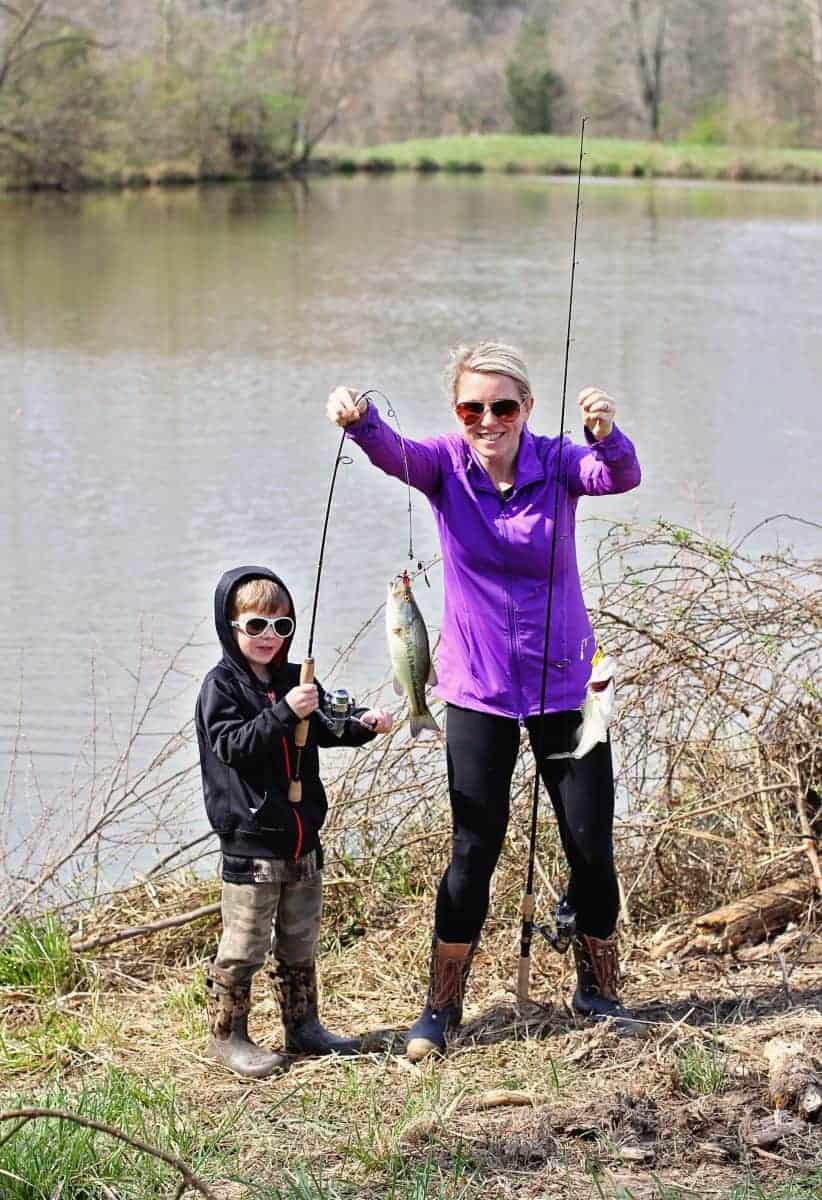
Set kids up for fishing success
If you want kids to love fishing right off the bat, you need to set them up for success. While adults may love the peace and serenity of a quiet day fishing, kids want action! Even the most focused kid will get bored if there are no bites or catches. Start kids off by fishing with a small spinning rod in a local stocked pond for fish that are easy for kids to catch (bluegill, sunfish, bass). The more fish available to catch, the greater your chances. Adults may be willing to wait all day for that one giant fish, but kids would rather catch 50 little fish as fast as possible.

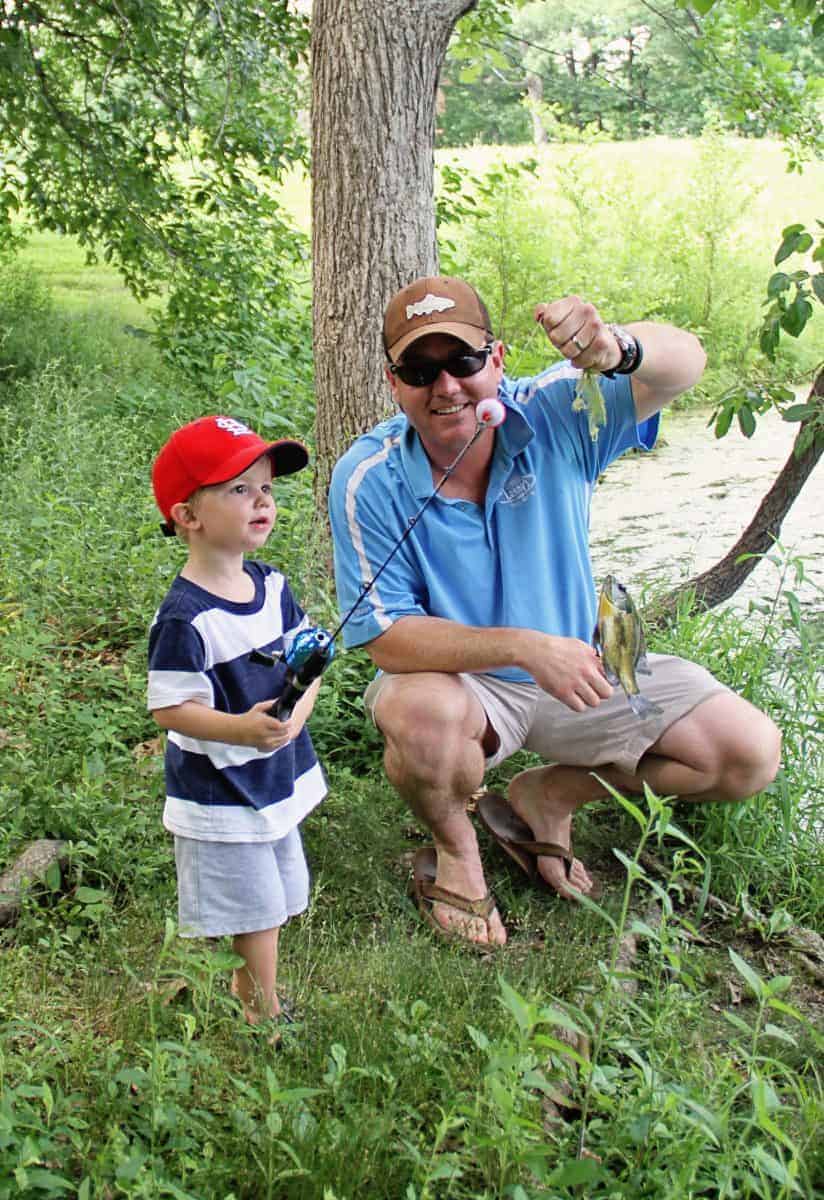
Make fishing fun for kids
Use live bait, if you can. This not only entices the fish, but keeps kids interested. If possible, don’t buy your bait, but help your kids catch it! That’s half the fun for most kids, and sometimes more fun than the fishing itself. More often than not, our kids are way more interested in playing with worms, shrimp, crickets, grasshoppers and minnows than actually fishing.
Put a bobber on their line. This helps them visually know when they’re getting a bite. If your kids are little, use smaller fishing poles that are easier for their small hands. Give them your 100% undivided attention, which they’ll remember, even if they don’t catch a thing. And when they do catch a fish, make sure you yell and clap like crazy! If they see you lose your mind over catching a fish, they’re definitely going to want to do it again!
For more on this, see our post on how to raise kids that love to fish.
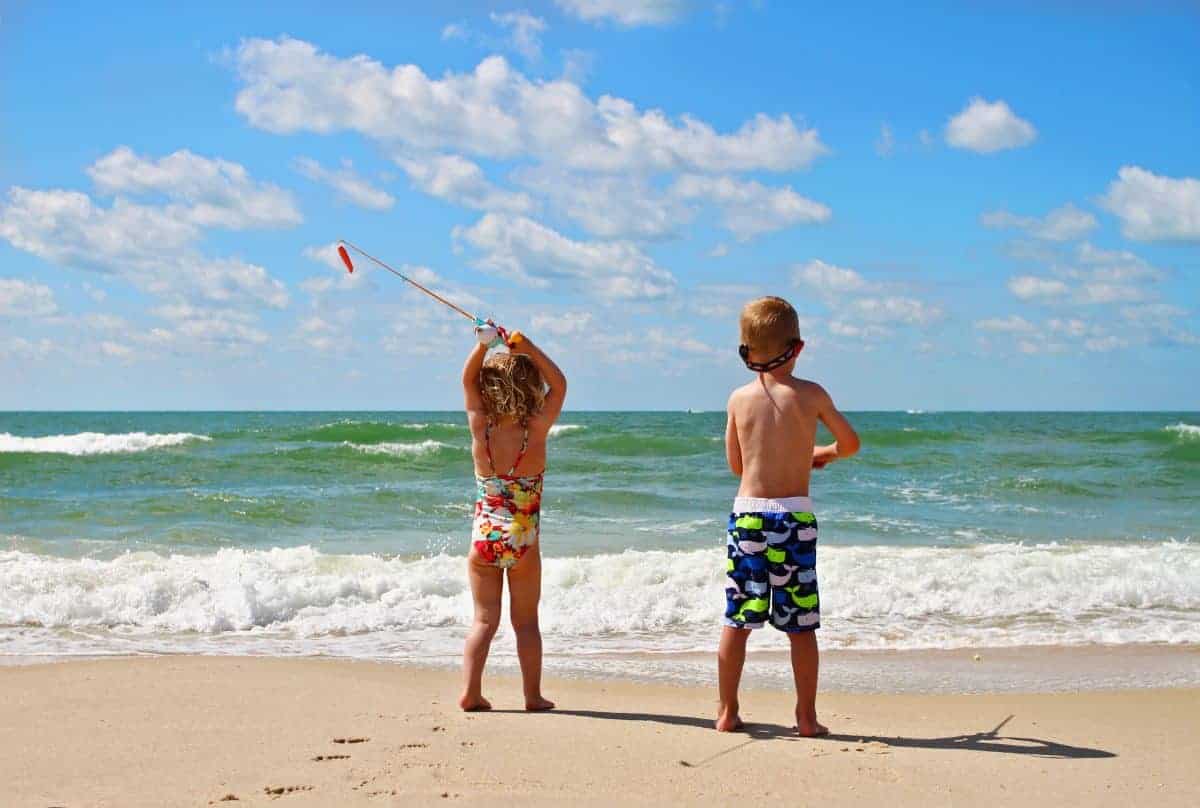

What age kids should start fly fishing?
Like many generic answers about the right time to try anything, the answer to when you should start teaching a kid how to fly fish is…it depends. A lot of people will tell you not to start teaching kids to fly fish until they are between eight and ten years old. That’s about the time kids’ attention spans lengthen and patience develops so that they can fish in a serious way. However, every child is different.
Our oldest son started fly fishing with dad when he was two years old. He could cast pretty well by four years old. Now, at seven, he’s learning to tie his own flies and knots and can fish on his own for decent periods of time. Our daughter, on the other hand, is five and doesn’t have the patience or focus to fly fish beyond a few casts here and there. But, she loves being outside on the water with us, chasing butterflies and catching crawdads. Every kid is different and you know your child best.

Take them fishing with you
No matter what age your kids are, feel free to take them along on your casual fishing outings. That way they can watch you fish, get excited about catching a fish and spend time with you in nature. If your little one is too young to walk, consider a carrier or a backpack (we’ve used both). If your child’s old enough, you can practice cast with them every now and then. Keep it light-hearted with no pressure. When they start to get frustrated or super wiggly, stop and do something else. Working with young children on casting basics and letting them experience catching fish on a fly rod are great at any age. The most important thing is to make it fun so they don’t get frustrated and completely give up before they’re patient enough to really enjoy it.


Practice a cast
If you think it’s time to introduce your child to fly fishing, start by teaching them the basics of casting. We recommend practice casting off the water because then it’s really about practicing and not about catching fish. Spend some time in your backyard, driveway or at the local park practicing casting with your child. Use a leader that’s no longer than 8 feet and tie something light (with no hook) to the end to mimic a fly. Choose a spot to cast to or set up a target/indicator so they know exactly where to cast.
Make a few casts in front of them to show them how it’s done. Explain that for a fly cast to work, they will need to stop the tip of the rod up high on the forward and backward casts to allow the line to shoot accurately. Show them how to keep your wrist locked, your elbow moving on a flat surface and punch forward with their thumb. Next, let them have a few turns on their own. Introduce a cadence or rhythm and give them something to say out loud as they cast—for example, “front, back, front, back.”

Provide gentle guidance
After a few attempts on their own, next, help them out by standing/kneeling behind them and gently guiding their cast. Kids can learn fly casting very quickly by feeling someone else make the cast while holding the rod. With your child holding the fly rod in one hand, place your hand over theirs on the rod and make the cast for them. Finally, let them try on their own again.
If you can get thirty minutes with them holding a fly rod and getting used to how it feels, you’ve done well! Be very patient and verbally reward them when they do well, make improvement or hit the target. Kids love to receive positive approval from adults, their parents.
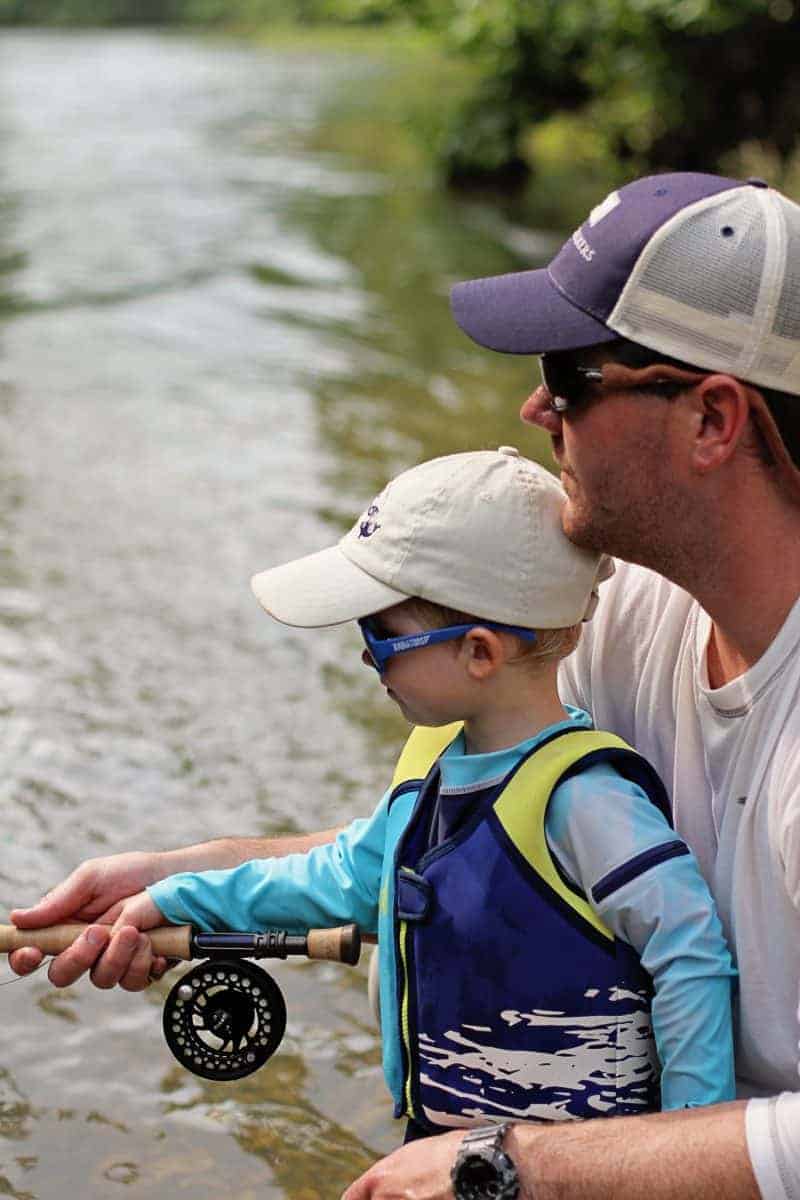
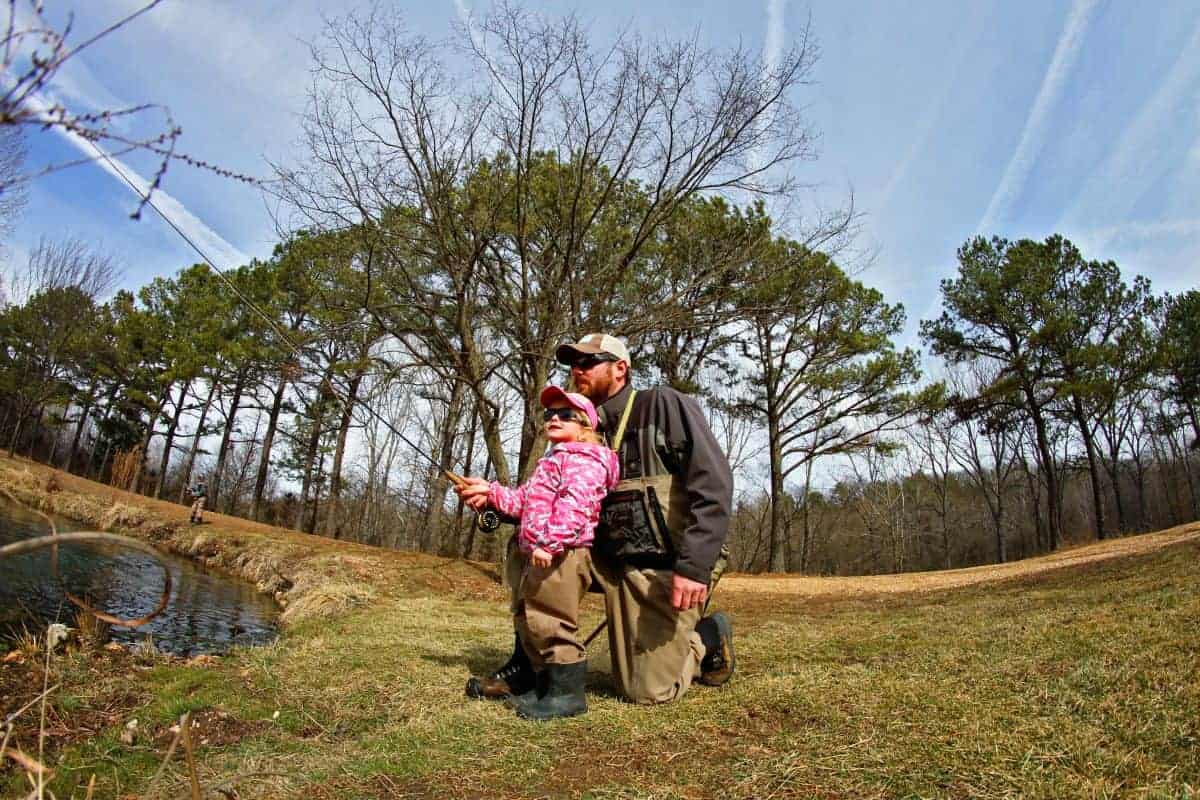
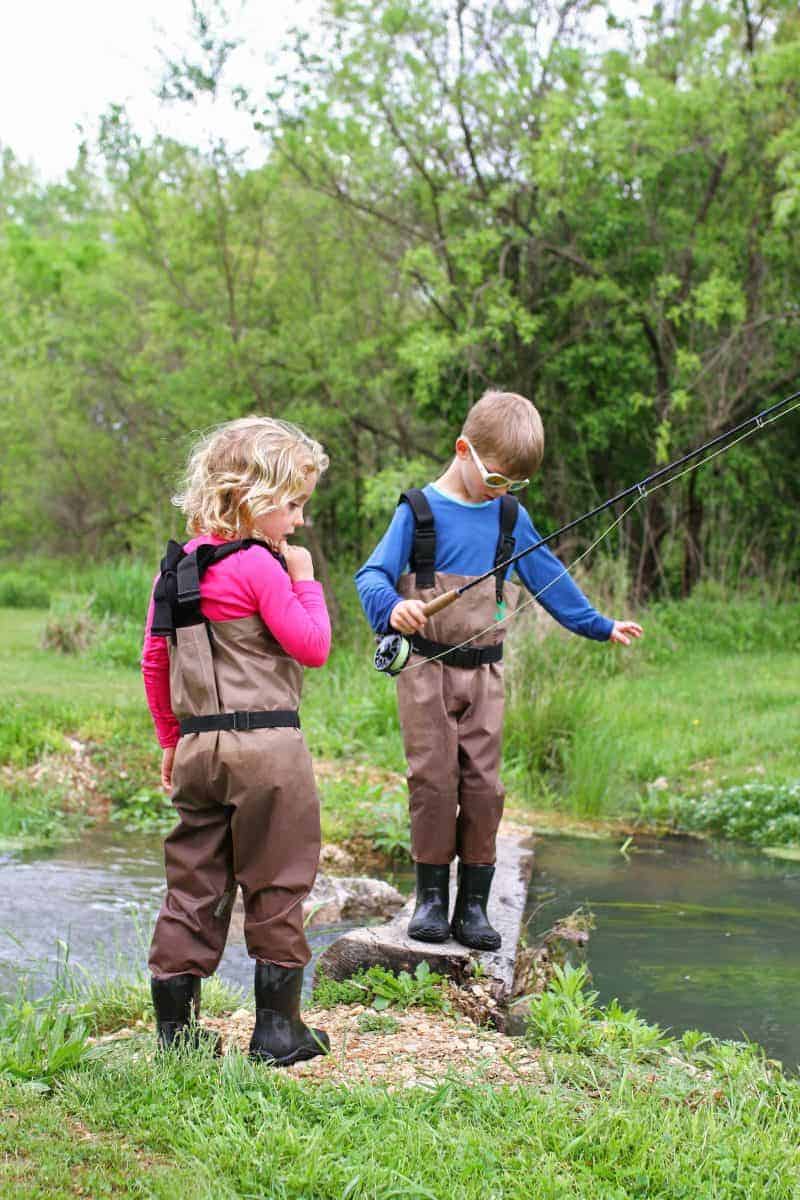
Keep fishing trips short & fun
When your kids first start fishing (fly fishing or otherwise), let them set the pace. Kids learn best by discovering in their own way and on their own time. Let your child fish for as long as he or she stays interested (probably about 30 minutes for kids under 7). Never push a kid to keep going when they’re obviously done. At this point, it’s more about making it fun for them than anything else. We know it’s hard, but try to avoid fishing yourself on some of these outings and resist the urge to show them how to do it over and over. Once is enough and then hand the rod over. And when they’d rather skip rock in the water or hunt for frogs, by all means, take a break!
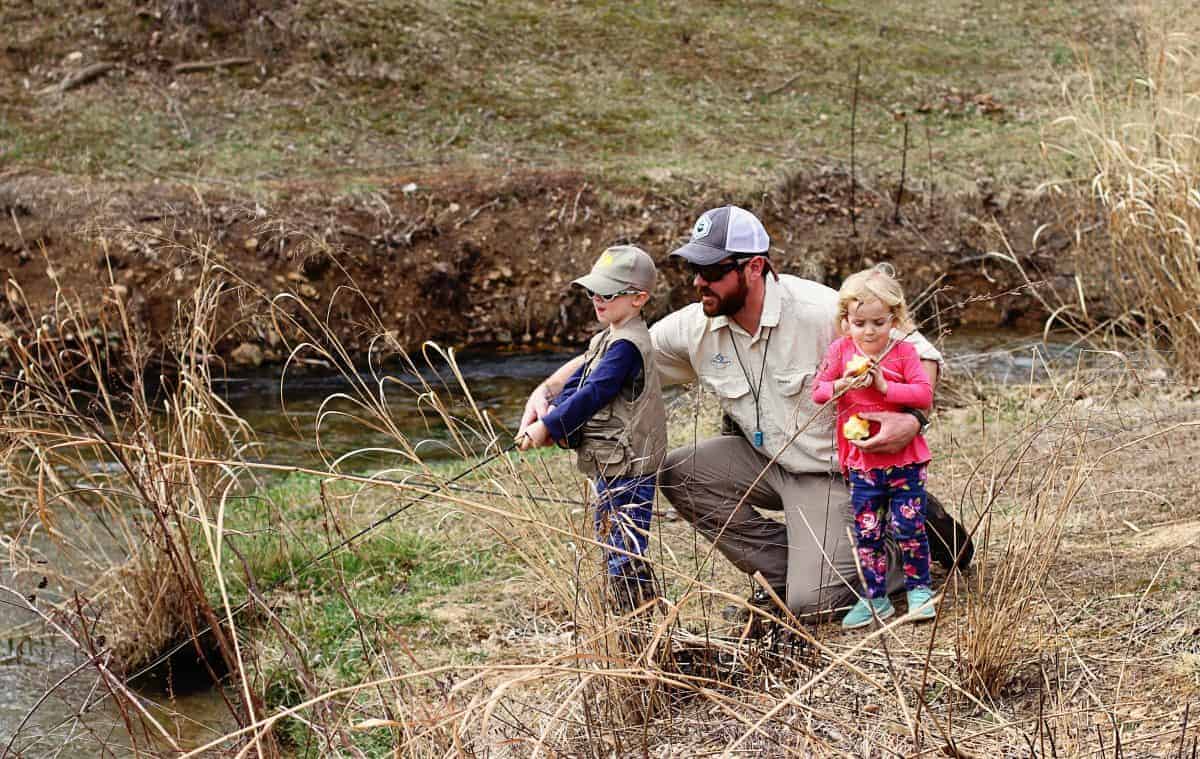

Get others involved
There is absolutely no harm in letting someone else help teach your child how to fly fish. It’s particularly hard for older kids and teenagers (or even adults) to take instruction from their parents. If you have a child that wants to learn, but gets frustrated with you as their teacher, get help from a friend or relative that fly fishes. Hire a guide for a day. Or sign them up for a lesson, class or camp. Sometimes all kids need to put everything together is for someone else to show or tell them how to do something (even if it’s the exact same advice you’ve been giving them).
Another way to get others involved is to let your child bring a friend along. Sometimes kids can teach each other lessons or learn things together better than individually. Maybe it’ll spark some healthy competition between them to see who can cast more accurately or the farthest. And then, when their attention is spent, they’ll have someone to explore with or help them dig for worms.

A few other fly fishing suggestions
No matter what age or skill level your child is, there are some other things you can do to ensure the fishing outing is a success (even if you don’t catch any fish). Here are few additional ways to keep your kids safe, happy and entertained:
- Pack lots of snacks and a cooler full of drinks
- Use kid-friendly bug spray and sunscreen
- Dress kids comfortably and pack extra clothes in case they get cold or wet
- Choose fishing spots with a playground nearby or a place where kids can catch frogs/minnows/crickets
- Always bring along a spinning rod or push button rod (in addition to the fly rod)
Best fly fishing gear for kids
For the most part, kids learning how to fly fish can usually use their parents’ gear. With the exception of waders/boots and clothing, there aren’t a lot of items that need to be specially geared towards children. However, giving a child their own fishing gear that’s their size and they’re proud of is a great way to get kids interested in going fishing.
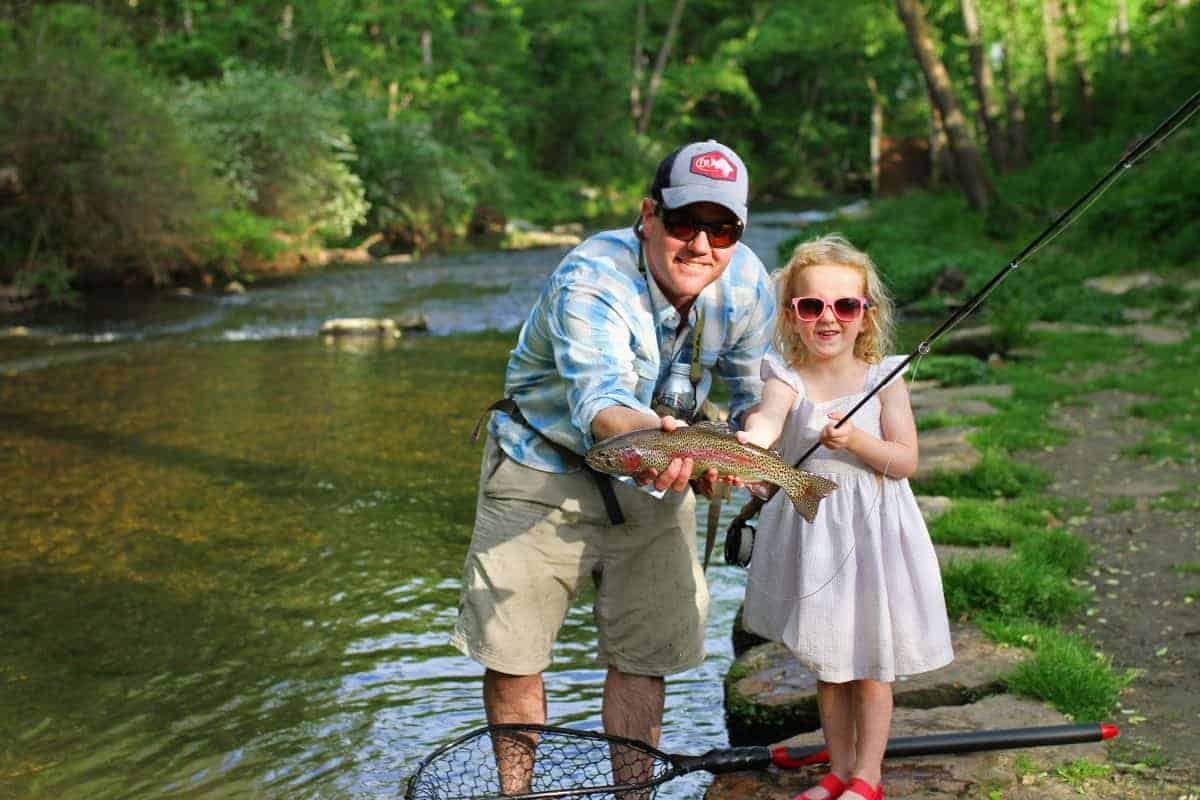

Choosing a fly rod for kids
Because their motor skills are not yet developed, and because they don’t have the diligence necessary to care for expensive rods appropriately, it can be daunting to find an appropriate fly rod for a child. You want a fly rod that is strong yet flexible, inexpensive but not cheap quality.
Most child fly rods are designed for kids aged six to nine. If your child is older or will be fishing beyond those years, it’s probably best to go with a “beginner” fly rod, as opposed to a “child” fly rod. Many fly rods designed for children are made of flimsy plastic that easily breaks or cracks. However, don’t go all out on an expensive overly-delicate fly rod. Kids can be hard on gear and you don’t want something that will break the first time your child trips or walks it into a tree (because it will happen). Constantly worrying about your kid handling and transporting expensive equipment will also kill your enjoyment of the overall experience and turn you into a nervous wreck.
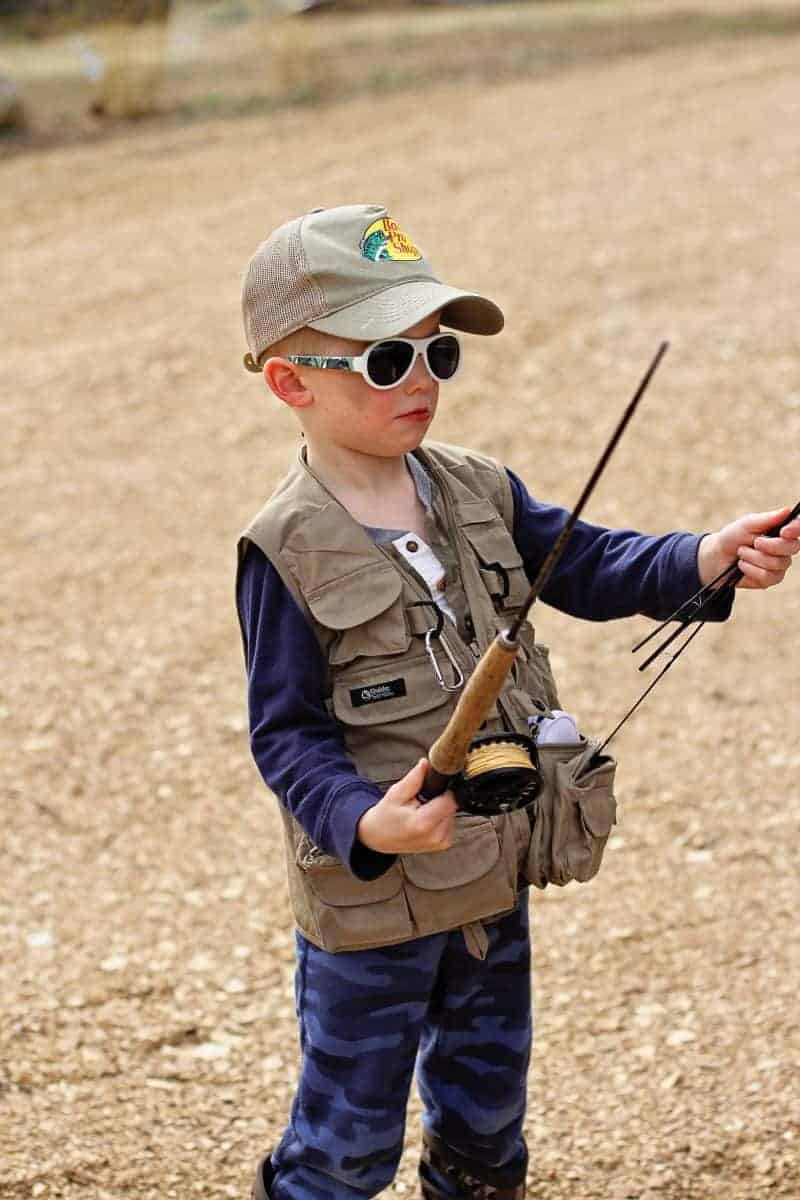
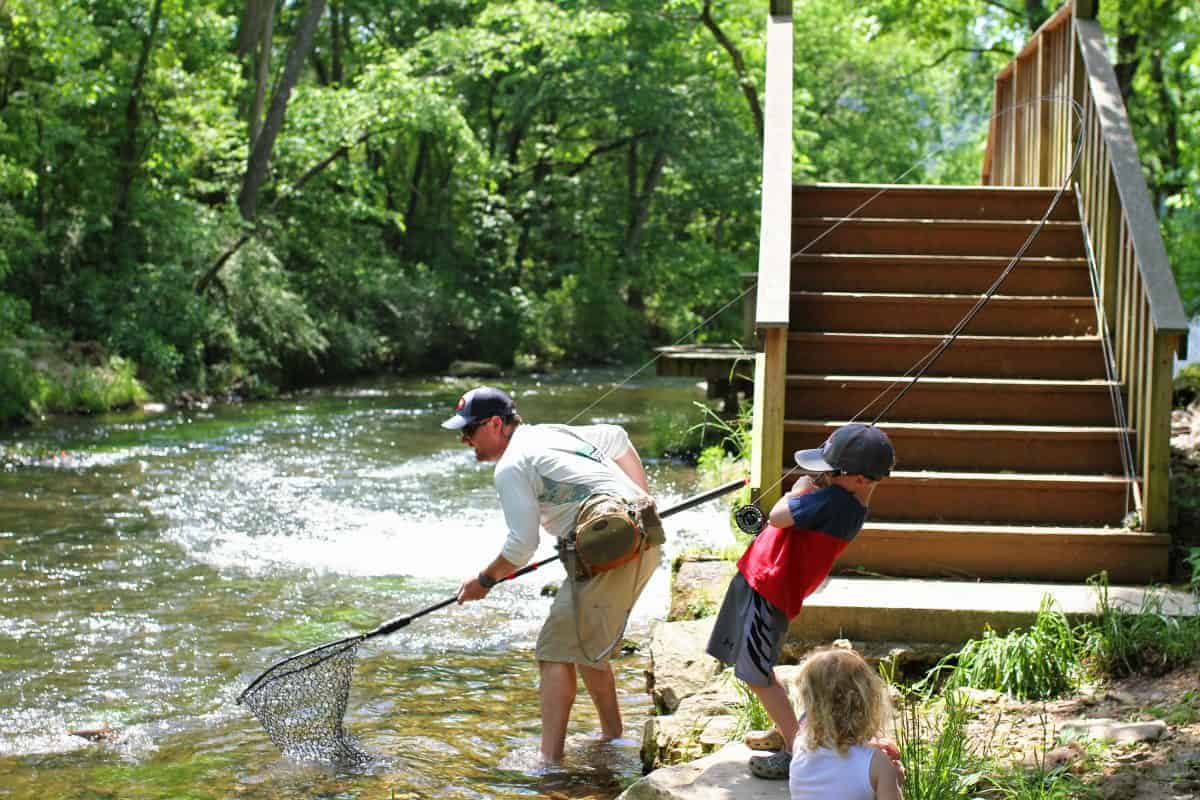
Choose a fly rod that’s limber and not too long
The first and most important quality of choosing a fly rod for your child is finding a rod that is not too stiff or long. A limber lightweight action rod will allow your child to feel the rod load. This leads to a much quicker grasp on the proper timing and casting technique. A shorter rod may not necessarily help a child learn to cast better, but will weigh less and eliminate some extra weight for the child’s young arms while they’re learning to cast. A long rod will also increase the likely hood of it interacting with trees, bushes, your face, and anything else within the range of the new angler’s casting, so shorter can save you time and hassle. Between 7-8 feet is the ideal rod length for a child to start fly fishing.
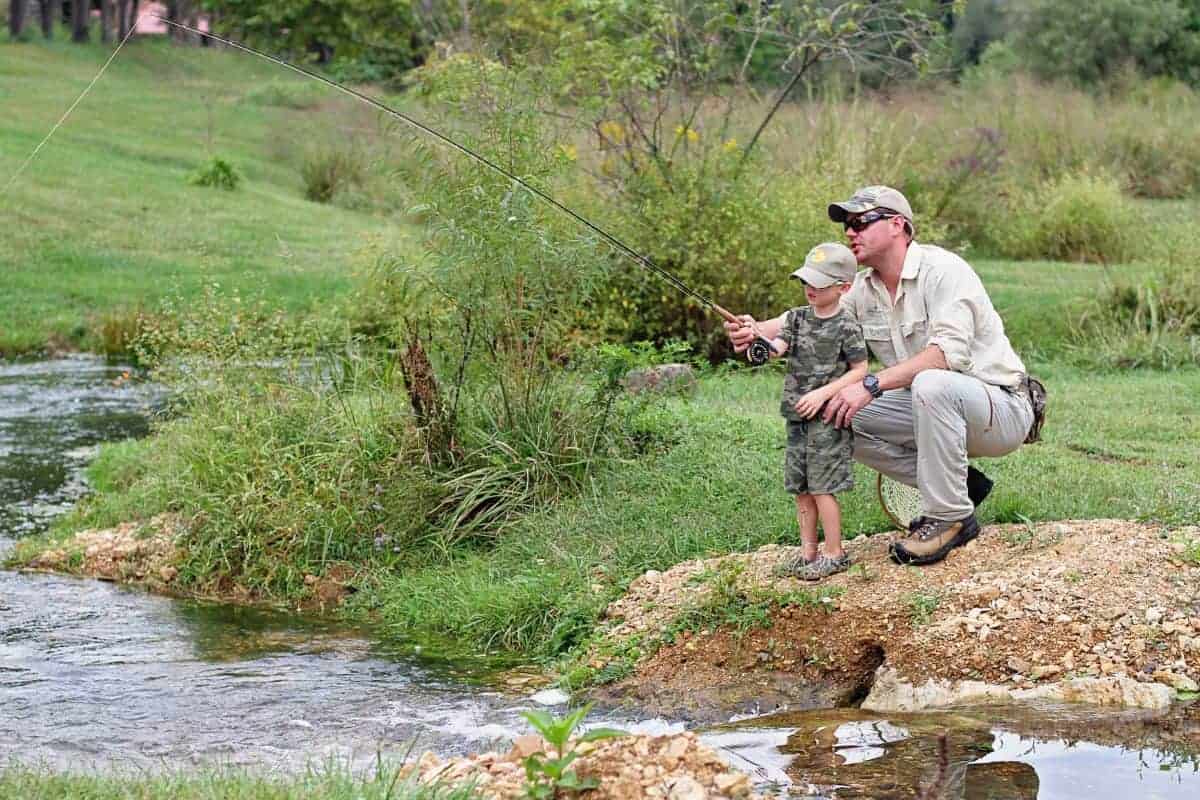
Best weight fly rod for kids
A 5 or 6 weight fly rod is the norm for adults who fly fish on lakes/ponds and small streams. However, the majority of children will find rods of this size too long, heavy and unwieldy to cast (especially for kids under 10). We recommend starting with a 3 or 4 weight rod for children. This is the ideal fly rod size for kids to fish on most ponds, lakes or shallow streams. Plus you add feel when fighting a fish. Pair it with a nice light reel and a good fly line and you’re ready to go.
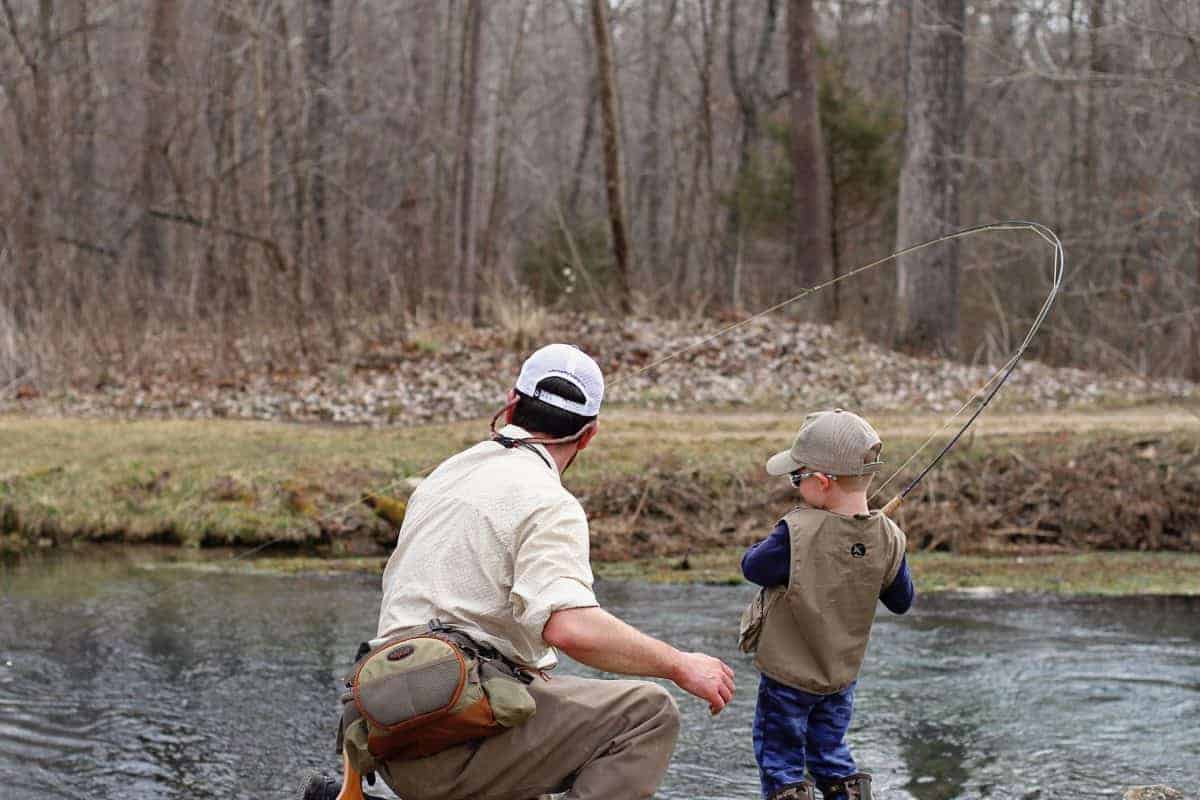
Kids fly rod recommendations
We started our kids off fly fishing with a 7’6” three-weight made by Temple Fork Outfitters. It’s the perfect bluegill rod and works for trout and smaller bass. It’s also not going to break the bank or be a huge disaster if it gets broken. Our recommendation for the best fly rod and reel for kids:
If you have a fly shop nearby, a lot of them will let your child try out a few rods before you buy one. Many places will let your kid test cast with a few different rods to see which one they like best. Some places will even give you a free casting or fly tying lesson when you buy from their shop! Shopping local not only supports your local fly fishing business, but provides lots of opportunities to meet like-minded people and learn new things about your local fishing areas.
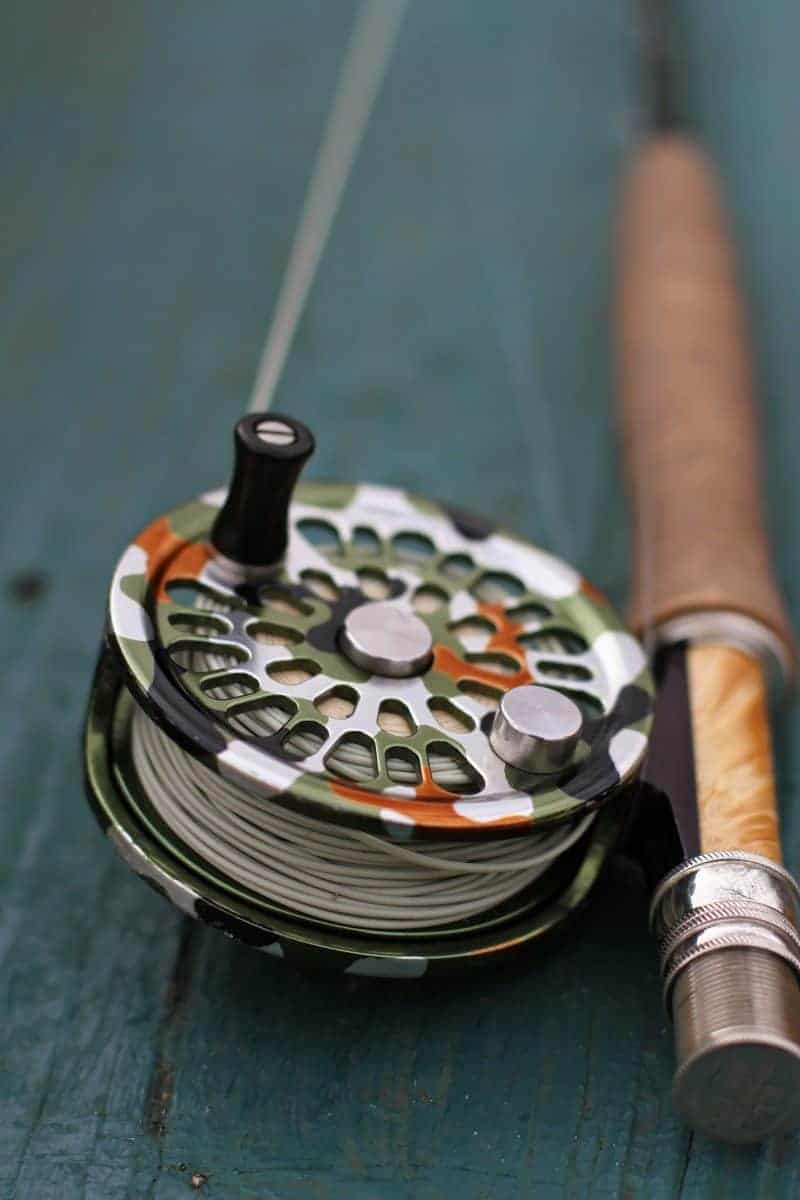
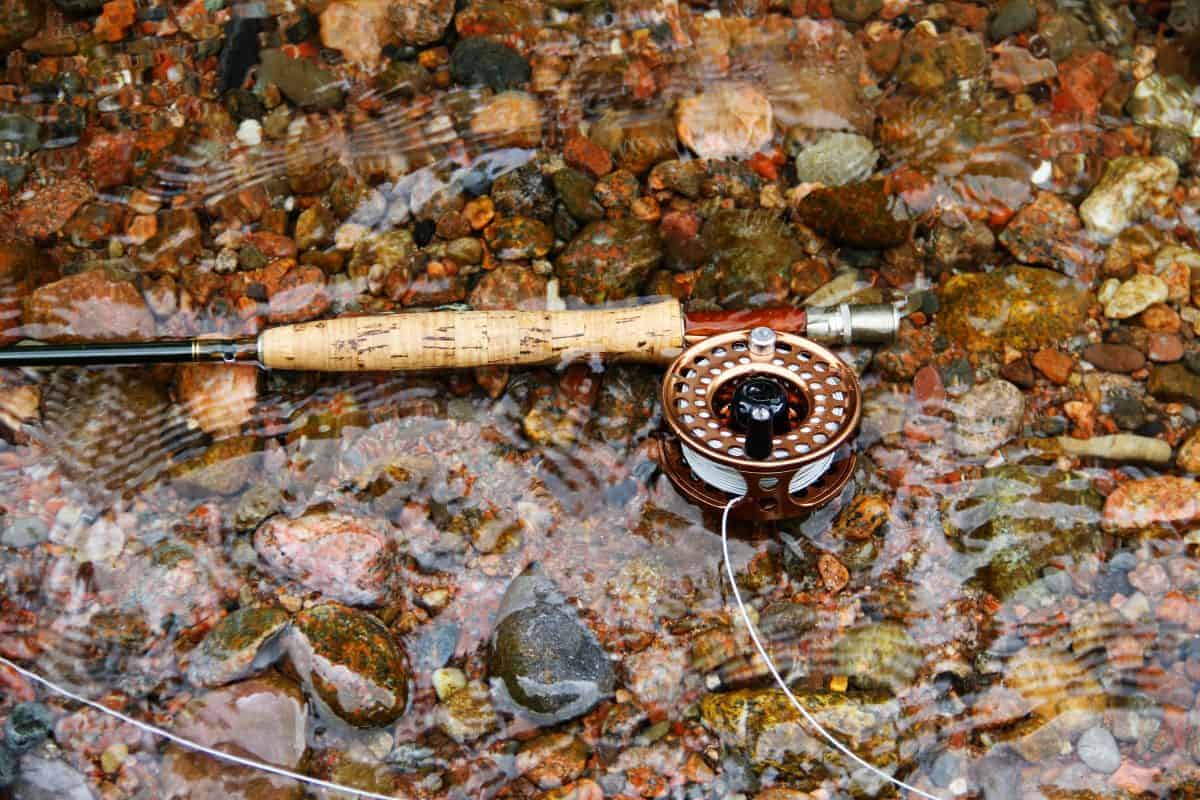
Best fly line to use when teaching kids to fly fish
As I mentioned above, when teaching a child how to cast a fly rod, they often find it tricky to feel the weight of the fly line loading the rod. One common technique to help with this is to use fly line one (or even two) line weights heavier. For example, if you have a four-weight rod, use a five weight line. This “over-lining” technique is ideal if the kid is making shorter casts since won’t need to get a lot of line in the air to make a cast. Once your child has their timing mastered, you can drop the line back to the manufacturer-recommended weight for their rod.

Best fishing waders for kids
There are only a handful of companies that make really durable and quality waders for kids. We love the toddler and children’s neoprene waterproof fishing waders by OAKI. Their child-sized waders are made of 90D nylon, which are completely waterproof, but still breathable. The nylon is soft to the touch and the waders are very lightweight, which makes them easier for kids to walk around in and easier for us to pack. They have a full rubber boot, completely neoprene-lined, with a great tread, so no need to buy separate boots. The straps are adjustable and they come in sizes starting as small as 2T, all the way up to 14/15. Plus, Oaki’s customer service is great. If you ever have an issue, they will take good care of you.
Head over to Oaki.com and use the code RWMC15 to save 15% on anything in the store!
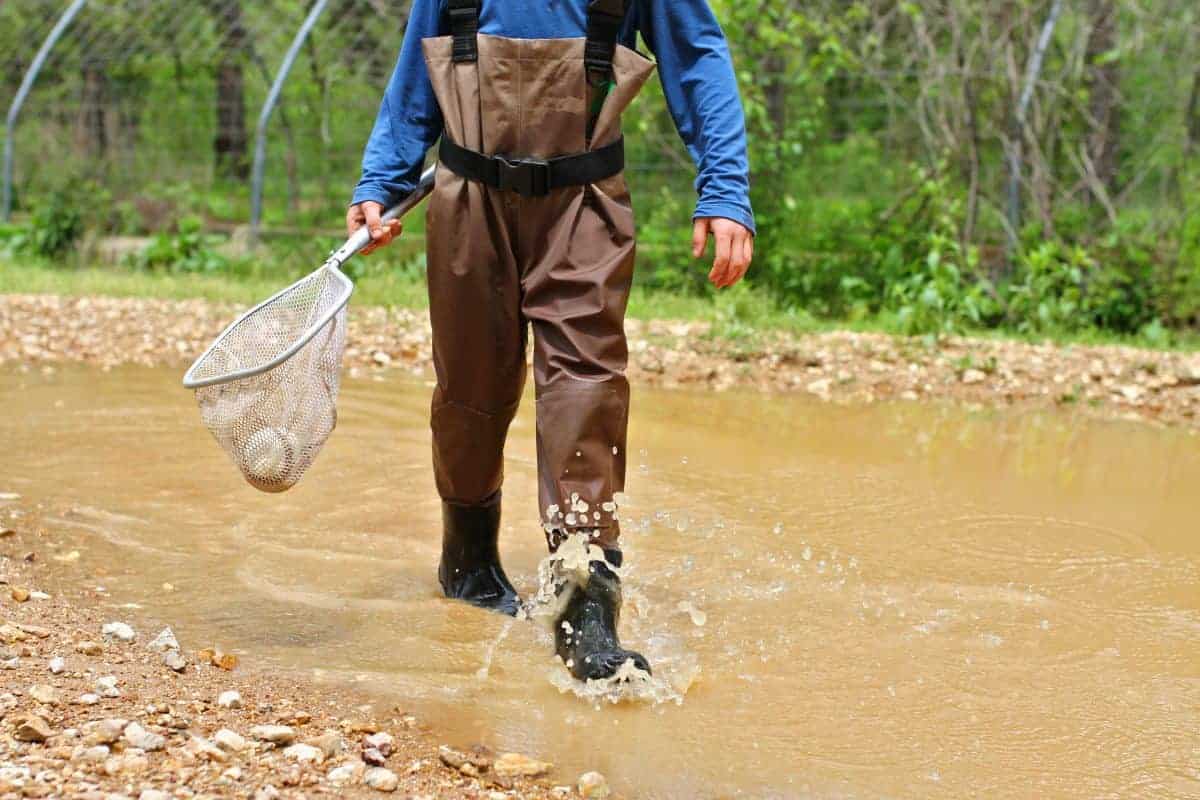
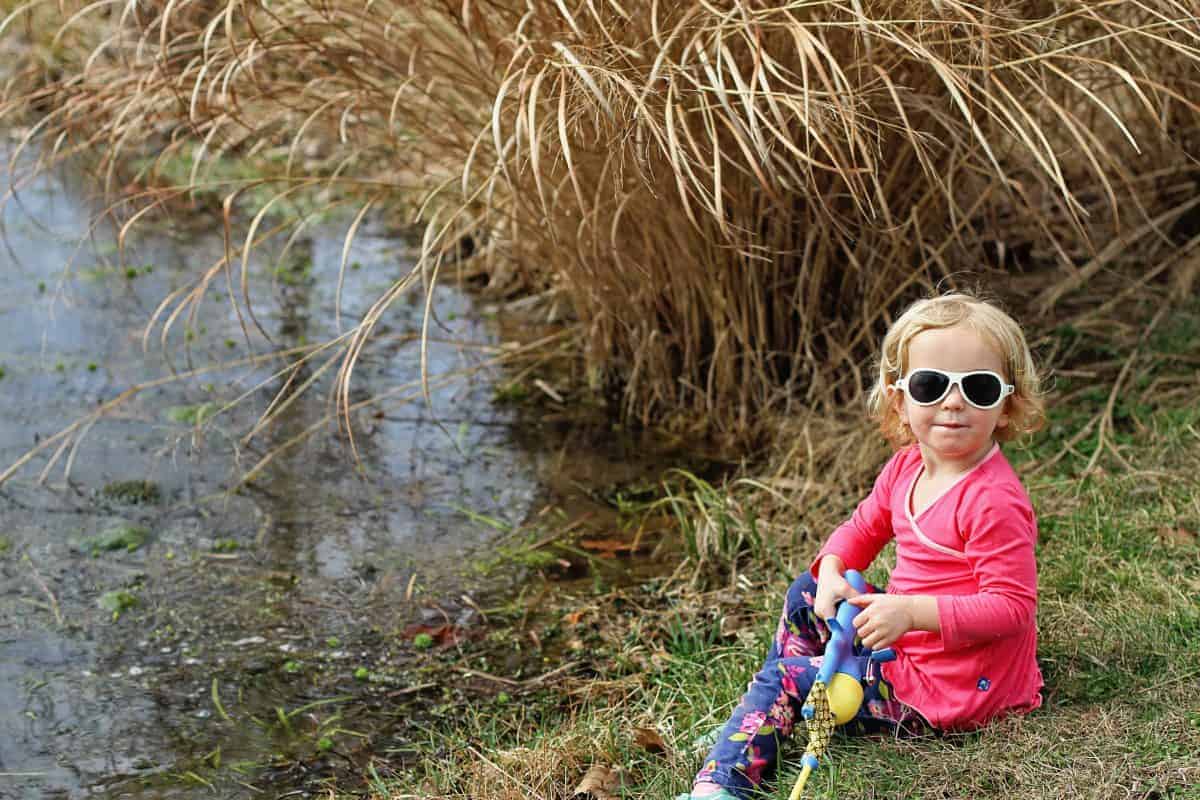
Polarized fishing glasses for kids
Protective glasses of some kind are absolutely essential for young anglers. Our kids are not allowed to fish without proper protective eyewear and a hat. When it’s sunny our kids love the polarized Babiators sunglasses. We’ve been using this brand of sunglasses since our oldest was 1. They’re amazing. The polarized glasses have anti-glare lenses that help kids see more clearly into the water. The lenses offer 100% UVA and UVB protection. They have flexible rubber frames and impact- and shatter-resistant lenses. They DO NOT break when you bend, twist, or step on them! Trust us, we’ve tried. But my favorite thing – if you lose or break them in the first year, they replace them for free!
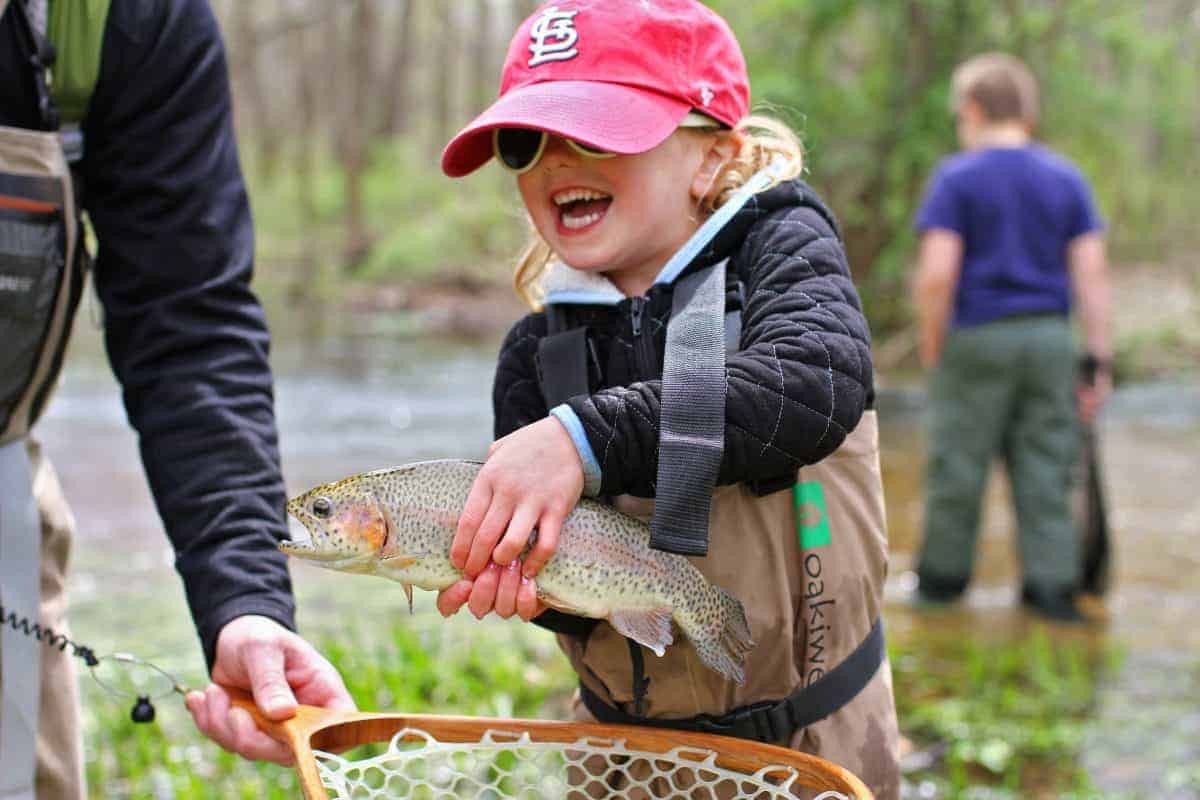

Outfitting your kids with flies and boxes
A simple basic bright-colored foam fly box is probably the best type of fly box to get for a child. We like this one from Orvis. That way, if they drop it in the water it’s easy to see and recover. Plus, it will float! Stock your child’s fly box with a few of each of the following basic flies that will catch just about anything:
- Woolly buggers (size 8 and 10) in olive, black and/or white
- San Juan worms in red and pink
- Large (size 12 and 14) pheasant tails
- Egg patterns
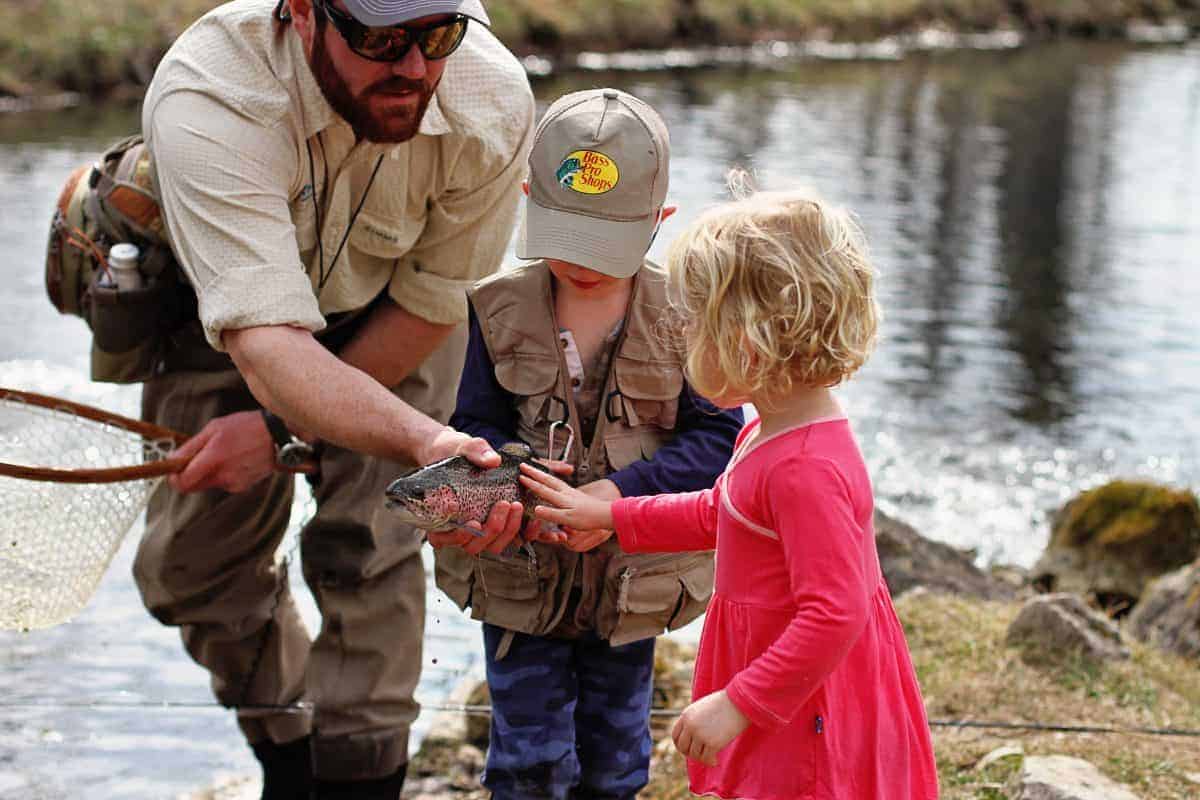
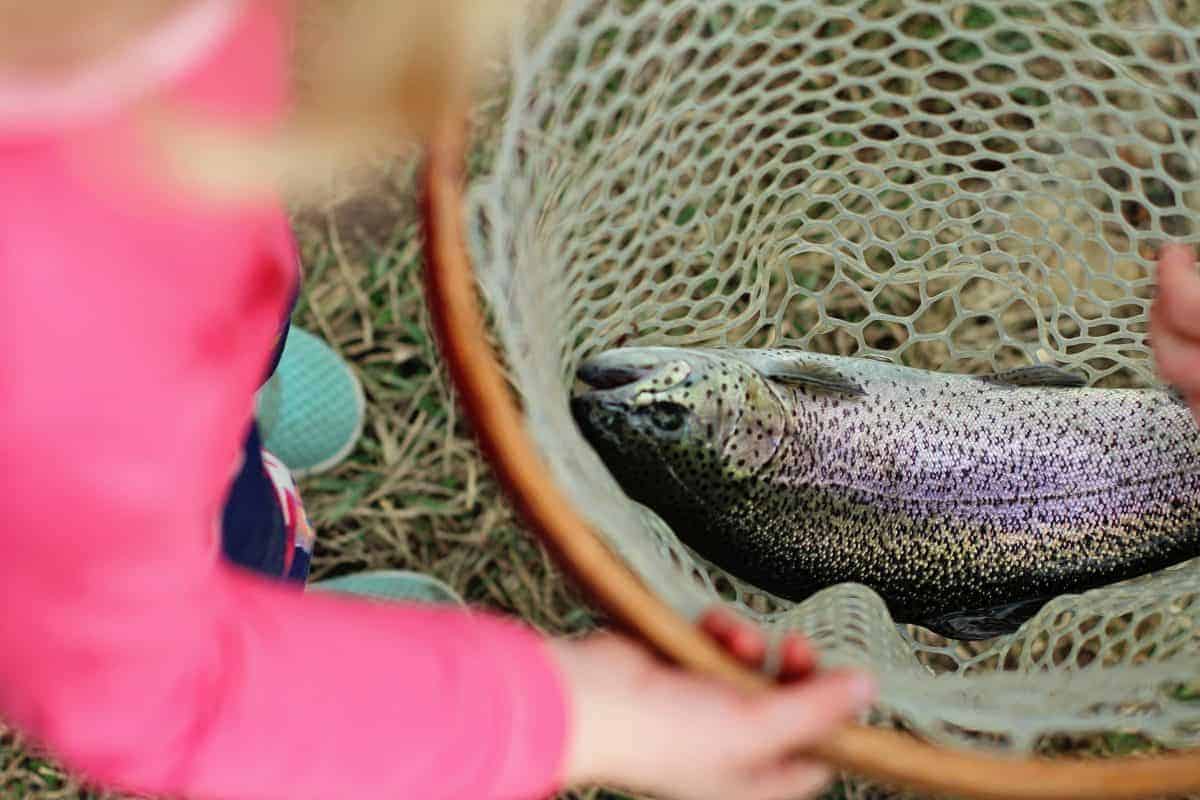
Other fly fishing tools and gadgets for kids
There are any number of fun little fly fishing gadgets and tools you can equip your child with, if you want. Most of these items are probably already in your fly pack, so no need to duplicate if you’re always the one tying their knots and attaching their flies. However, once your kid becomes a bit more self-sufficient, consider stocking their fly pack with the following items:
- box of flies
- a pair of nippers
- a small pair of hemostats for de-barbing new flies and unhooking
- some tippet
- leader
- strike indicators
- split shot
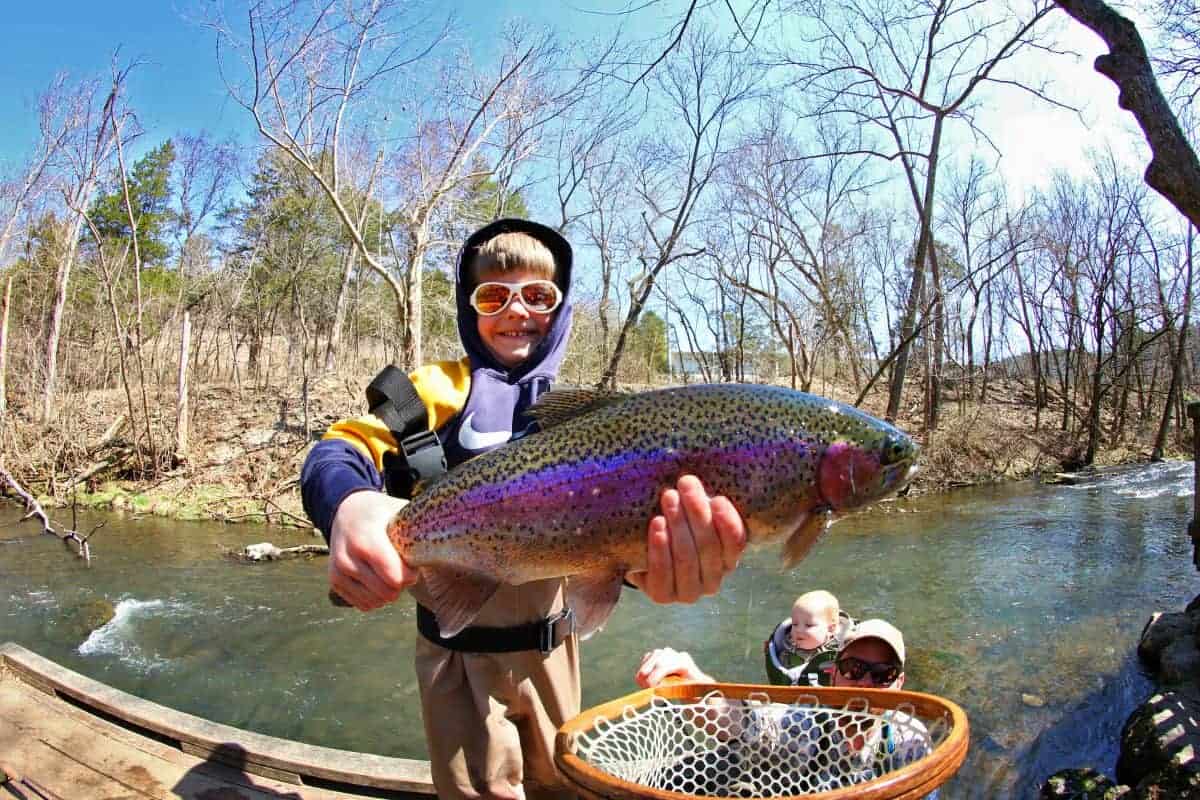
Tips for fly fishing with kids
We hope these tips and advice on how teaching kids to fly fish will help prepare and inspire you to get outside with your kids and catch some fish! Keep your expectations low and your rod tip high. Relax, be patient, and let the kids lead. Whether you catch 10 fish or just chase frogs around the water’s edge, spending time together outside will always be worth it.


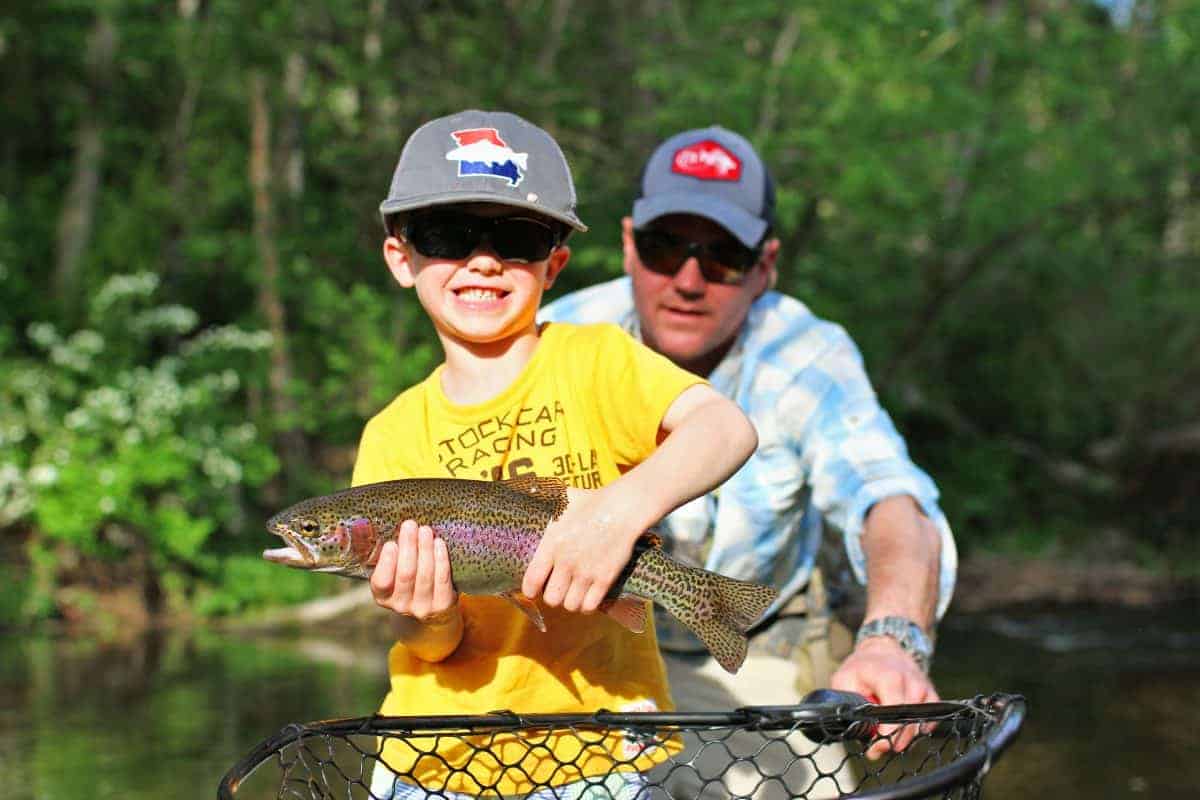







What a fantastic article, enjoyed every word!
I love all the specifics on rods in the gear, and love the photos.
I’m about to start teaching my 8yr old to fly fish, what an awesome article to kick off this new chapter. Keep up the good work!
My son just spent nearly $2,000 for a 5′ 4″ hand madebamboo rod and a custom color reel for his 2 and 4 year old daughters. Is this recommended
It must be fun that your kids love fishing and going outdoors. I would love for my future kids to enjoy fishing with my husband as well